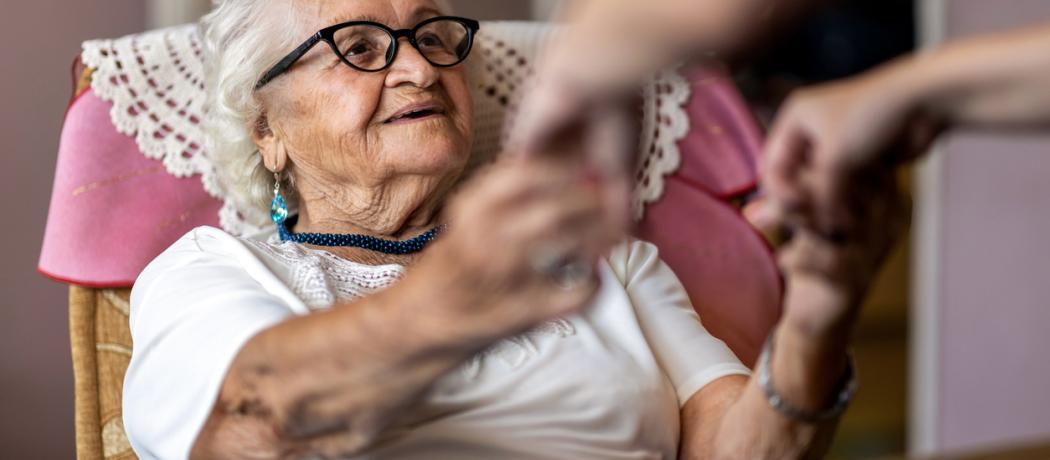It is of major concern that prolonged loneliness in assisted-living situations may lead to disorders of the immune system and cause cardiovascular disorders, weight gain, anxiety, depression, cognitive decline, even death.[1] But there is hope: it has been observed that being involved in situations conducive to generating positive intimate experiences is likely to lead to secretions of brain chemicals such as serotonin, oxytocin, dopamine, and others, which may lower anxiety levels and promote positive feelings, relieve stress, and help make life worth living.[2,3] Moving into a long-term care home should not necessitate losing the opportunity to engage in some level of intimacy-generating behaviors.
Conceptually, a degree of closeness—being inside someone’s personal space or letting another person enter one’s own personal space—represents an experience of intimate behavior.[4] Such an experience may occur at various levels of honesty, trust, caring, and openness. Intimacy-generating experiences may emerge in the context of various activities: leisure intimacies—doing things together, walking, gardening, playing sports, singing, playing bingo, doing charity activities; intellectual intimacies—revealing personally held opinions to each other such as revealing oneself in the context of a book club discussion; emotional intimacies—displaying one’s likes, dislikes, or vulnerabilities, for example, after jointly viewing or experiencing a movie or a theatrical or musical performance; and sensual intimacies—intimate physical contact from handholding to hugging to other stimulation of various intensities leading to pleasures of the body.
In assisted residential settings, recognition of the value of sensual-intimacy related experiences to relieve isolation and loneliness is relatively recent. In the not too distant past sensuous acts in their various expressions had been interpreted by administrators and caregivers as exceedingly private acts that had little relevance to older persons and in any case, were considered improper or taboo activities in publicly supported institutions.
Being able to initiate or enjoy intimacy-generating experiences at any level may require some well-remembered past good experience, a degree of secure self-esteem, and a bit of courage as well. In engaging even in a simple level of intimacy-generating activity there may have to be an element of letting go and at the same time there may be a fear of rejection, or a concern about not being able to disengage if things do not go quite right. These fears and concerns are real, particularly at the sensuous-intimacy generating level. Realistic consideration of entering into such activities may require planning as to time and place rather than being swept away, and some agreement may be valuable as to an exit strategy.
As to the specifics of sensuous activities, sexual medicine and sexual and reproductive rehabilitation professionals offer important recommendations for couples of any age who are able to reach out or give consent to such encounters. One strong recommendation is that the primacy of the penetrative act of sexual intercourse be played down. This intimate act may be the source of unsatisfactory experiences by way of transmitting disorders, inadequate physiological responses leading to discomfort or pain, lack of satisfaction, and the related anxieties about performance. The act also requires a degree of physical agility. It would be desirable at any level of sensual interaction if each partner knew their desired touch or verbal caress, and recognized the importance of guiding the partner, and the partner needs to listen and follow the requests.[5]
The challenge for today’s caregiving professionals in assisted-living settings is to recognize the need and then encourage, guide, and support isolated or lonely elderly people to reach out to their desired level of intimacy-generating experiences.[6]
—George Szasz, CM, MD
References
1. Jansson AH, Muurinen S, Savikko N, et al. Loneliness in nursing homes and assisted living facilities: Prevalence, associated factors and prognosis. J Nurs Home Res 2017;3:43-49.
2. Bell K, McMillin K, Ethridge LE. Bereft and left: The interplay between insecure attachment, isolation and neurobiology. Developmental 2022;64:101020.
3. Happyfeed. 4 brain chemicals that make you happy. Accessed 20 August 2022. www.happyfeed.co/research/4-brain-chemicals-make-you-happy.
4. Timmerman GM. A concept analysis of intimacy. Issues Ment Health Nurs 1991;12:19-30.
5. Szasz G. The pandemic and solitary sex. BCMJ. 20 December 2020. https://bcmj.org/blog/pandemic-and-solitary-sex.
6. Vancouver Coastal Health Authority. Supporting sexual health and intimacy in care facilities – A pocket reference guide. May 2013.
This post has not been peer reviewed by the BCMJ Editorial Board.
 |
| This work is licensed under a Creative Commons Attribution-NonCommercial-NoDerivatives 4.0 International License. |

